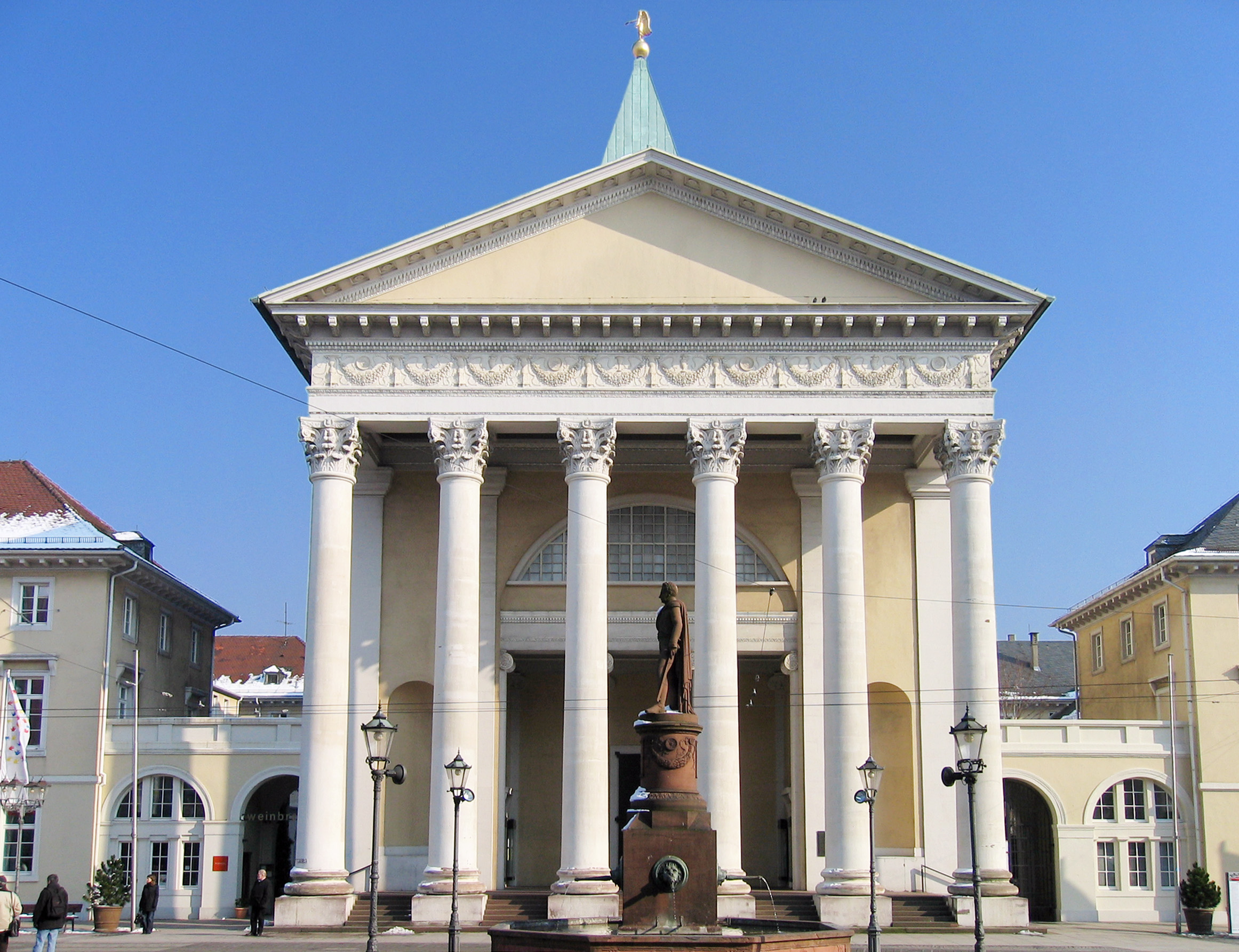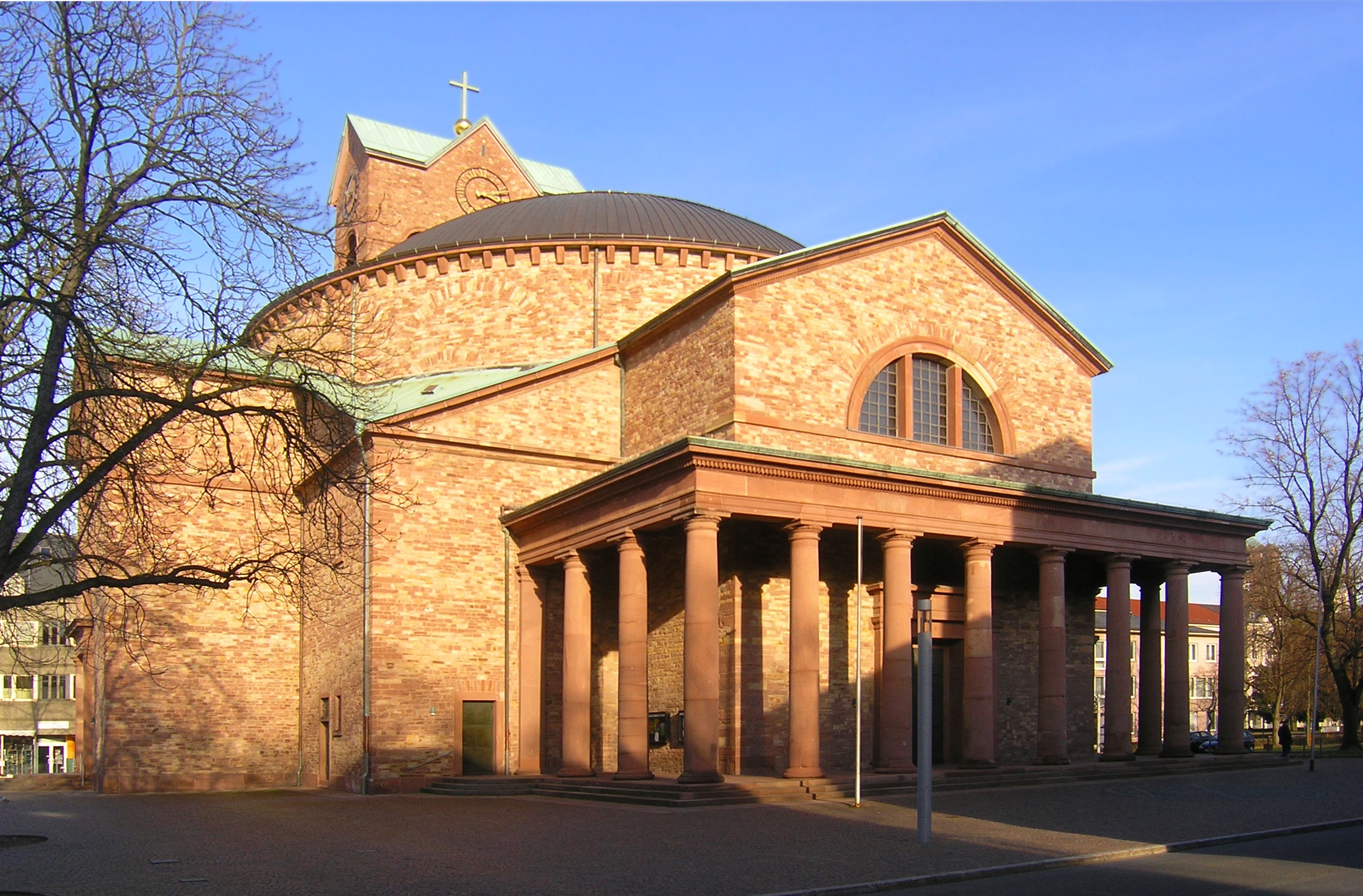Friedrich Weinbrenner on:
[Wikipedia]
[Google]
[Amazon]
 Friedrich Weinbrenner (24 November 1766 – 1 March 1826) was a German
Friedrich Weinbrenner (24 November 1766 – 1 March 1826) was a German


 Upon returning from Italy, Weinbrenner worked briefly in
Upon returning from Italy, Weinbrenner worked briefly in
 Friedrich Weinbrenner (24 November 1766 – 1 March 1826) was a German
Friedrich Weinbrenner (24 November 1766 – 1 March 1826) was a German architect
An architect is a person who plans, designs and oversees the construction of buildings. To practice architecture means to provide services in connection with the design of buildings and the space within the site surrounding the buildings that h ...
and city planner
An urban planner (also known as town planner) is a professional who practices in the field of town planning, urban planning or city planning.
An urban planner may focus on a specific area of practice and have a title such as city planner, town ...
admired for his mastery of classical style.
Birth and education
Weinbrenner was born inKarlsruhe
Karlsruhe ( , , ; South Franconian: ''Kallsruh'') is the third-largest city of the German state (''Land'') of Baden-Württemberg after its capital of Stuttgart and Mannheim, and the 22nd-largest city in the nation, with 308,436 inhabitants. ...
, and began his career apprenticed to his father, a carpenter. He worked as a builder in Zürich
, neighboring_municipalities = Adliswil, Dübendorf, Fällanden, Kilchberg, Maur, Oberengstringen, Opfikon, Regensdorf, Rümlang, Schlieren, Stallikon, Uitikon, Urdorf, Wallisellen, Zollikon
, twintowns = Kunming, San Francisco
Z ...
and Lausanne
, neighboring_municipalities= Bottens, Bretigny-sur-Morrens, Chavannes-près-Renens, Cheseaux-sur-Lausanne, Crissier, Cugy, Écublens, Épalinges, Évian-les-Bains (FR-74), Froideville, Jouxtens-Mézery, Le Mont-sur-Lausanne, Lugrin (FR ...
starting from 1788. He arrived to Vienna
en, Viennese
, iso_code = AT-9
, registration_plate = W
, postal_code_type = Postal code
, postal_code =
, timezone = CET
, utc_offset = +1
, timezone_DST ...
in 1790 and began his study of architecture, largely self-taught. In 1790–91 he studied at the ''Bauakademie'' of Vienna and Dresden, then, in 1791–92, spent several months in Berlin
Berlin ( , ) is the capital and largest city of Germany by both area and population. Its 3.7 million inhabitants make it the European Union's most populous city, according to population within city limits. One of Germany's sixteen constitu ...
where he was exposed to Palladian architecture
Palladian architecture is a European architectural style derived from the work of the Venetian architect Andrea Palladio (1508–1580). What is today recognised as Palladian architecture evolved from his concepts of symmetry, perspective and ...
. Carl Gotthard Langhans
Carl Gotthard Langhans (15 December 1732 – 1 October 1808) was a Prussian master builder and royal architect. His churches, palaces, grand houses, interiors, city gates and theatres in Silesia (now Poland), Berlin, Potsdam and elsewhere bel ...
(1732–1808), David Gilly
David Gilly (7 January 1748 – 5 May 1808) was a German architect and architecture-tutor in Prussia, known as the father of the architect Friedrich Gilly.
Life
Born in Schwedt, Gilly was the son of a French-born Huguenot immigrant named Jacques ...
(1748–1808) and Hans Christian Genelli (1763–1823) were influential in the formation of Weinbrenner's architectural thought. He spent the years 1792 to 1797 in Italy, where he was part of the circle around Carl Ludwig Fernow (1763–1808) in Rome
, established_title = Founded
, established_date = 753 BC
, founder = King Romulus ( legendary)
, image_map = Map of comune of Rome (metropolitan city of Capital Rome, region Lazio, Italy).svg
, map_caption ...
. His study of the ancient buildings of Rome, Pompeii
Pompeii (, ) was an ancient city located in what is now the ''comune'' of Pompei near Naples in the Campania region of Italy. Pompeii, along with Herculaneum and many villas in the surrounding area (e.g. at Boscoreale, Stabiae), was burie ...
, Herculaneum
Herculaneum (; Neapolitan and it, Ercolano) was an ancient town, located in the modern-day ''comune'' of Ercolano, Campania, Italy. Herculaneum was buried under volcanic ash and pumice in the eruption of Mount Vesuvius in AD 79.
Like the n ...
and, especially, Paestum
Paestum ( , , ) was a major ancient Greek city on the coast of the Tyrrhenian Sea in Magna Graecia (southern Italy). The ruins of Paestum are famous for their three ancient Greek temples in the Doric order, dating from about 550 to 450 BC, whi ...
were foundational to his later work. He was among the first German architects to see the early Doric Doric may refer to:
* Doric, of or relating to the Dorians of ancient Greece
** Doric Greek, the dialects of the Dorians
* Doric order, a style of ancient Greek architecture
* Doric mode, a synonym of Dorian mode
* Doric dialect (Scotland)
* Doric ...
buildings at Paestum.Brownlee, David B., ''Friedrich Weinbrenner, Architect of Karlsruhe'', University of Pennsylvania Press, 1986, Chapter 1
Career


 Upon returning from Italy, Weinbrenner worked briefly in
Upon returning from Italy, Weinbrenner worked briefly in Strasbourg
Strasbourg (, , ; german: Straßburg ; gsw, label= Bas Rhin Alsatian, Strossburi , gsw, label= Haut Rhin Alsatian, Strossburig ) is the prefecture and largest city of the Grand Est region of eastern France and the official seat of the ...
and Hanover
Hanover (; german: Hannover ; nds, Hannober) is the capital and largest city of the German state of Lower Saxony. Its 535,932 (2021) inhabitants make it the 13th-largest city in Germany as well as the fourth-largest city in Northern Germany ...
, but established himself in Karlsruhe, where he would make his career as the official architect, working for both government and private clients. Karlsruhe was established in 1715 to replace a former capital and become the capital of the newly created Grand Duchy of Baden
The Grand Duchy of Baden (german: Großherzogtum Baden) was a state in the southwest German Empire on the east bank of the Rhine. It existed between 1806 and 1918.
It came into existence in the 12th century as the Margraviate of Baden and subs ...
– now a central German state but then a sovereign principality. A generation of architects were trained under his supervision, and in 1825 he helped establish the Polytechnic School in Karlsruhe. With the architects he trained and the publication of his work, a "Weinbrenner style" of Classicism developed. Weinbrenner is, of course, the architect principally responsible for creating Karlsruhe as a Classical city and, beginning with his 1797 General Plan, for the development of the city plan with an official Protestant church (Stadtkirche) (1807–15), City Hall (1821–25) on the Triumphal Road leading to the Princely palace. Most of Weinbrenner's buildings were reconstructed in the 1950s following their destruction in the Second World War
World War II or the Second World War, often abbreviated as WWII or WW2, was a world war that lasted from 1939 to 1945. It involved the vast majority of the world's countries—including all of the great powers—forming two opposi ...
.
Buildings in Karlsruhe
* Karlsruhe Synagogue (1798–1800, burned 1871) * Palace (1803–14, partial reconstruction 1960–63) * Karlsruhe court theater (1804–08, burnt 1847) * Library (1805, destroyed in World War II) * City Hall (1805/06 and 1821/25, extensive reconstruction of the facade, interior greatly changed) * Protestant Church (Stadtkirche), (1807–16, reconstruction after the war with a contemporary interior) * St Stephan Catholic Church (1808–14, reconstruction without reconstruction of the interior 1951–55) * Southern city gate, demolished at the end of the 19th century * Stephanienbad at Karlsruhe-Beiertheim (1811, now used as a church) * Museum (1813–14, burnt 1918) * Western city gate (1817–21, partially destroyed in World War II, later demolished) * Ständehaus (1820–22, destroyed 1944) * Mint (1826–27)References
2. Elbert, Claudia; Friedrich Weinbrenner und die Weinbrenner-Schule; C.F. Müller Verlag; Karlsruhe, Deutschland; 1988. 3. Seneca, Oskar; Friedrich Weinbrenner: Jugend und Lehrhjahre 1907; Gyan Facsimile Publisher; New Delhi, India; 2015. 4. Valdenaire, Arthur; Friedrich Weinbrenner: Sein Leben und seine Bauten; Wentworth Press; Sydney, New South Wales, Australia; 2019. 5. Weinbrenner, Friedrich; Architektonisches Lehrbuch; Triglyph Verlag; Bad Saulgau, Deutschland; 2015. 6. Weinbrenner, Friedrich; Über Die Wesentlichen Theile Der Säulen-ordnungen Und Die Jetzige Bauart Der Italiäner, Franzosen Und Deutschen; Nabu Press; Charleston, South Carolina; 2010. 7. Friedrich Weinbrenner. 1766-1826. Architektur und Städtebau des Klassizismus. Katalogbuch, Städtische Galerie Karlsruhe. Deutschland. 2015.External links
{{DEFAULTSORT:Weinbrenner, Friedrich 1766 births 1826 deaths Architects from Karlsruhe 19th-century German architects German ecclesiastical architects